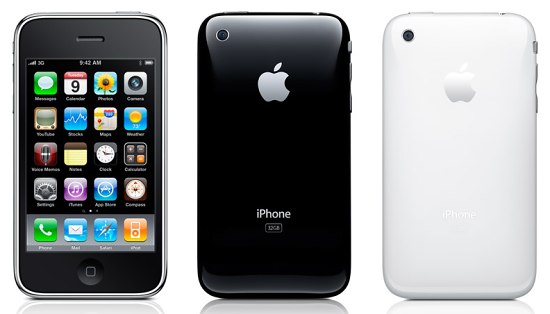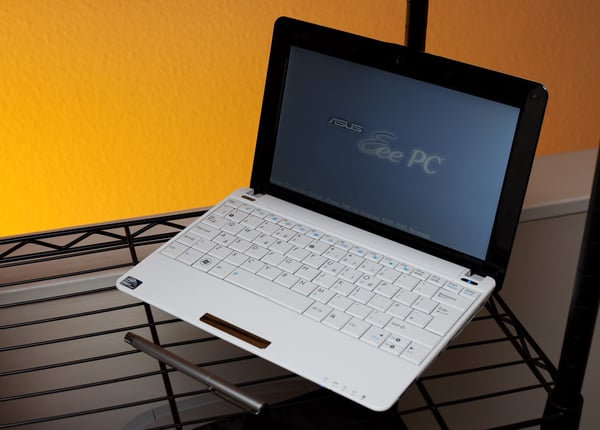
The year was 2009.
The iPhone looked like this (3GS):

Microsoft had just released Windows 7, and Asus Eee PCs running the new OS were all the rage, complete with underpowered processors and three-hour batteries:

Social media started taking over and was proven as a consumer change platform when United Airlines began breaking guitars.

And of the most popular songs of the year and still one of my favorites, the all-time classic, "I'm On A Boat" by Lonely Island featuring T-Pain!

While we were all busy poking each other on Facebook, tech whizzes started founding companies like Uber, Square, Quora, and Venmo, and Satoshi Nakamoto was busy mining his first Bitcoins.
And then, Google comes out with the beast, Google Wave!

Google Wave was everything: chat, email, Google Docs, and could even push out posts to Blogger, Google's original blogging platform. It also boasted a Twitter feed and widget development platform. It created the original web workspace, where you could communicate and collaborate with your friends and peers, catch up on your latest feeds, take polls, play games, share photos, and publish to your blog. Oh, and Joss Whedon's Firefly inspired everything from the name to the error messages.
And I loved it!
It was fast, and users could do so much. It felt like we were witnessing the next level of email communication and internet capabilities.
And then, it just disappeared. Google officially killed the project in 2010, citing a lack of interest.
How did Google Wave influence the Google Workspace of today?
There are possible reasons why Google quickly ended the project. It had a clunky interface; it was overly complex, and it provided constant updates to all the waves happening in real time. For reference, imagine if you saw every email conversation in your inbox being written before your eyes - similar to a Google Doc, but in email - very quickly becoming an overwhelming firehose of information and activity.
But, it wasn't a bad idea. It was just ahead of its time and tried pushing out features that were not quite ready to be introduced on the technology of the time, even though it was only 10 years ago.
The ethos of a unified, real-time work and communications portal that Google dreamt up for Wave has become the foundation for what is now Workspace.
The Google Wave team was on the right track then, as is the Google Workspace team now. Armed with a much more robust infrastructure, a way more mature Google product suite, and a treasure trove of data - the likes of which we will never fully understand - they stand poised to complete the dream they started 10 years ago.
The timing couldn't have been better, or worse.
Just as Google Wave created a deluge of information 10 years ago, we haven't improved that much; instead, it has gotten worse. We are always overwhelmed with information, compounded by push notifications and an always-on mentality.
Pair that with the pandemic, and we witnessed the adoption of new technologies at an accelerated pace.
As Microsoft CEO Satya Nadella said in April of 2020, "we saw two years of digital transformation in just two months."
As businesses raced to keep up, they turned to Google Workspace for support, and as a result, the recently renamed product is experiencing massive growth - but at the expense of time away from technology.
The issue with the way teams conduct their workday is the constant contact and the hundreds of apps that make it possible. With overlapping features, employees are often confused about which app they should be using for what communications.
Take this common use case, for example:
Want to chat? Slack. Oh, but what if you're going to chat about a task in Asana? Should that be in Slack or stay in Asana? What about an email thread? Should that information stay in email or be brought into your CRM? If it's copied into your CRM, should you discuss that client or customer in the CRM, Asana, Slack, or Google Chat (because the team you are working with prefers Google Chat?)
You get the idea.
A few years ago, Google teased us with a magical future of contextual awareness in our business apps. The system would work silently in the background to serve up the information we need, and the people we need to talk to, on the platform of our choice, precisely at the right time and on the suitable device.
We are still waiting for that future to arrive. But, Google Workspace is inching closer.
As with any Google product announcement, the initial version is about 80% done. Google will spend the next few years working hard to make its vision a reality, and finally, it becomes part of the core functionality and receives regular updates.
In Google's announcement blog post, it called Workspace "everything you need to get anything done now in one place." Google also said it was introducing "a new, deeply integrated user experience that helps teams collaborate more effectively, frontline workers stay connected, and businesses power new digital customer experiences."
Workspace has all the ingredients to do what it promised, already working in its apps. All Google has to do is integrate them into the Gmail/Google Workspace space while avoiding the issues that caused the downfall of Google Wave 10 years ago. This is no small feat.
I believe Google will be releasing features to make this happen and bring the elements of its other apps into Gmail at a much faster pace due to already having the experience and infrastructure to support the real deal. I don't think we are likely to see full versions of Google Docs, Sheets, or Slides in Gmail anytime soon, but their current positioning suggests we won't use it, relying on the full apps to conduct deep work.
I also believe Google will create the fully integrated, contextually aware work operating system that we so desperately need to simplify our flood of information and help us control and complete our ever-growing list of tasks.
Add this compelling business platform together with the simplicity of ChromeOS, and you will have achieved the Workspace of the future we were robbed of 10 years ago.
That, my friends, is the future of work. Now that we have that solved, I would love to have teleportation next. Is that too much to ask?
Jesse Nowlin is the Westland Real Estate Group CIO by day and tabGeeks founder and podcast host by night. He can be found on Twitter and LinkedIn and his podcasts Google Workspace Recap and Supporting IT Support.